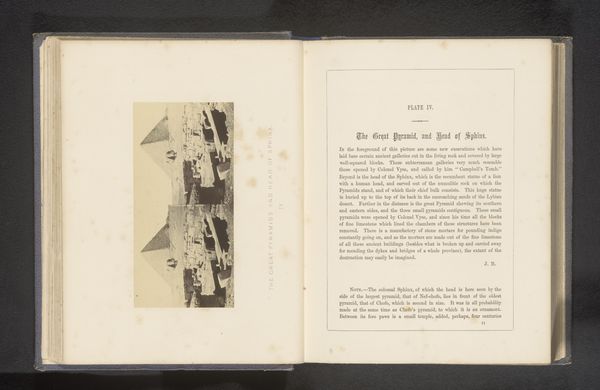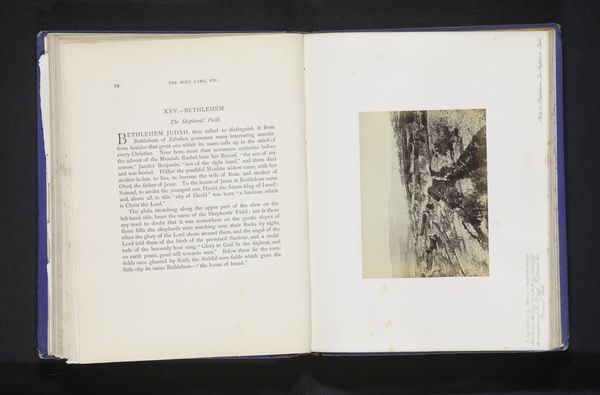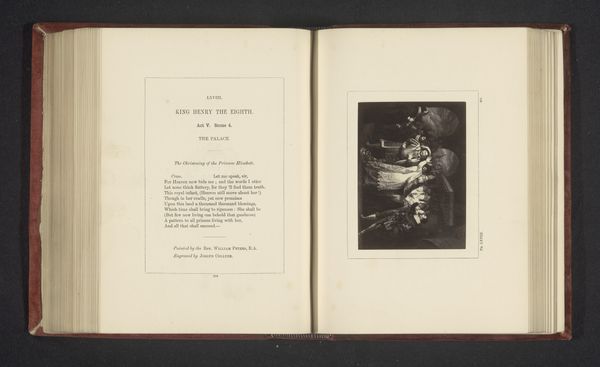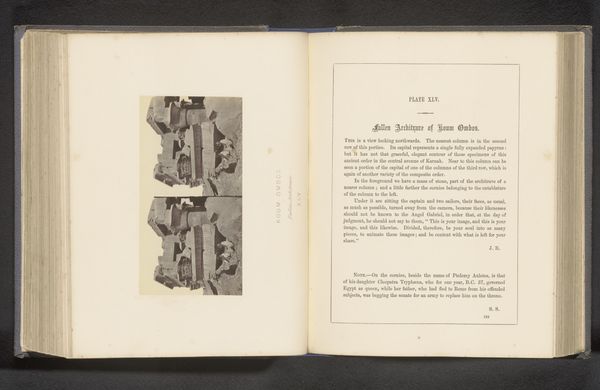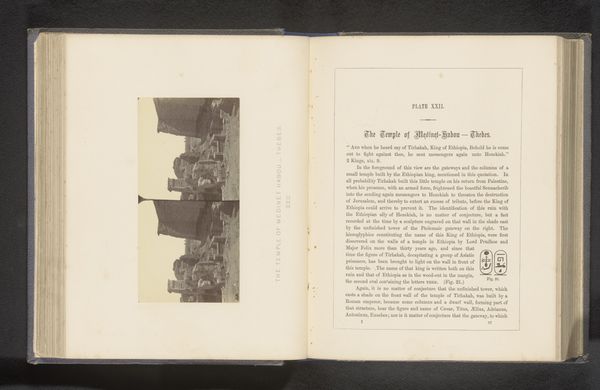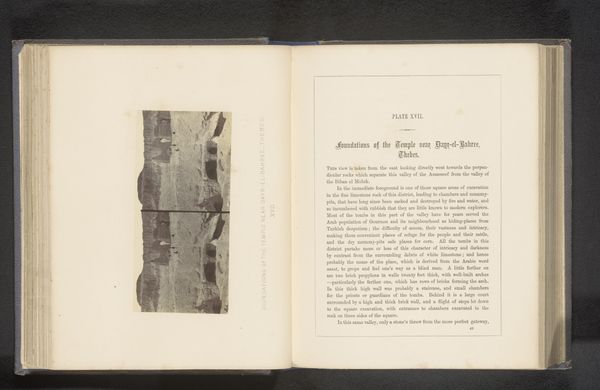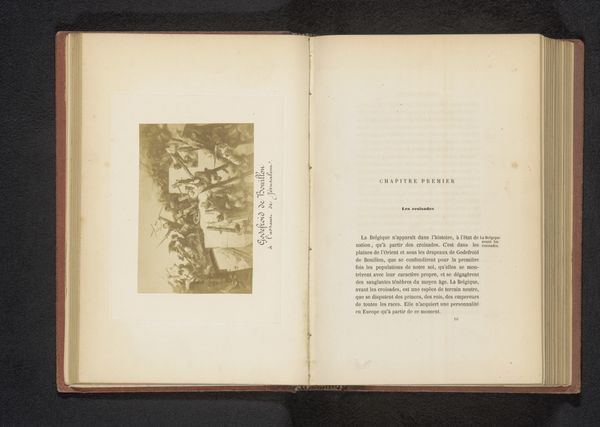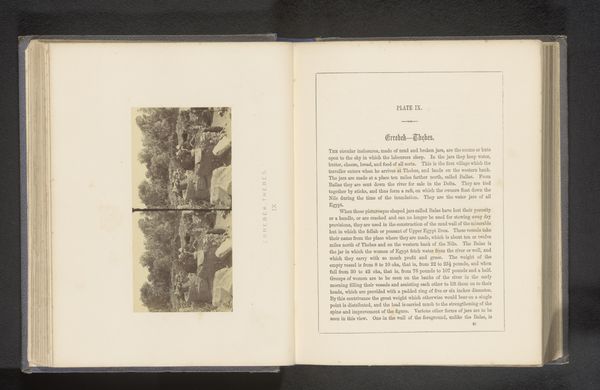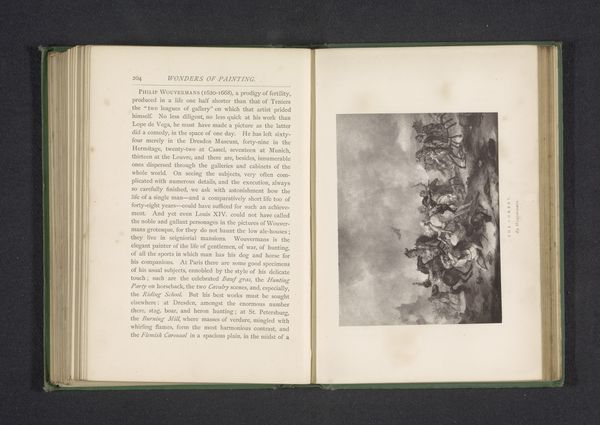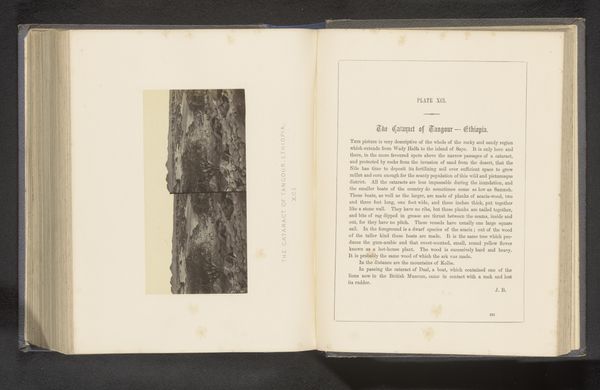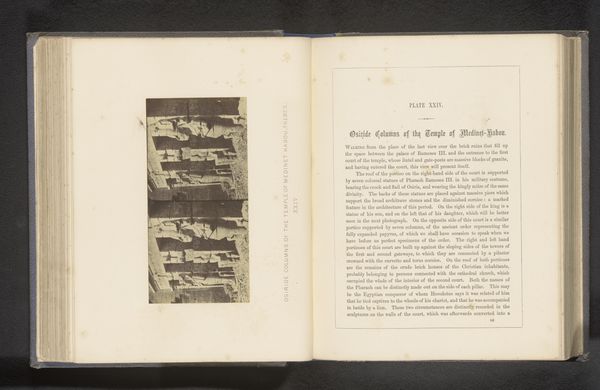
Gezicht op een steengroeve, mogelijk gebruikt bij de bouw van de piramiden van Gizeh before 1862
0:00
0:00
print, photography, gelatin-silver-print
# print
#
landscape
#
ancient-egyptian-art
#
photography
#
ancient-mediterranean
#
gelatin-silver-print
Dimensions: height 72 mm, width 144 mm, mm
Copyright: Rijks Museum: Open Domain
Curator: I find the tonality in this gelatin silver print quite remarkable; Frith coaxes a great deal of luminosity from this very ancient scene. Editor: Yes, there's an undeniable monumentality conveyed through Frith's careful selection of the vista's compositional elements, but what's truly compelling is imagining the immense, brutal labor exacted to carve the stones featured in this pre-1862 photograph. Curator: I understand, yet consider how Frith frames the space. This work, titled “Gezicht op een steengroeve, mogelijk gebruikt bij de bouw van de piramiden van Gizeh,” directs our gaze precisely – notice the deliberate play of light and shadow across the rock face, and its striking depth. It's an analytical feat! Editor: Indeed, Frith presents a stunning formalist vision, but let's remember this likely served a commercial purpose, appealing to colonial tastes rather than just existing as an isolated art object; and so, the narrative implications in “A View of a Stone Quarry, Possibly Used in the Construction of the Pyramids of Giza”, residing here at the Rijksmuseum, can’t be ignored either! Curator: I concede to your reading of the print’s historical function; it must also be observed how adroitly he renders its gradations, managing subtle distinctions throughout the visual field. He coaxes an incredible level of detail from stone! Editor: Quite, and by doing so, he both veils and inadvertently underscores that those ancient hands—those makers—become lost to the abstract processes of monument creation that is on display. This raises powerful and crucial questions about labor. Curator: A most intriguing point... considering its stark contrasts, Francis Frith’s landscape also allows for an intense reflection on the ancient. Editor: A truly fascinating nexus of process and aesthetics—illuminating unseen layers in the complex making of icons.
Comments
No comments
Be the first to comment and join the conversation on the ultimate creative platform.
